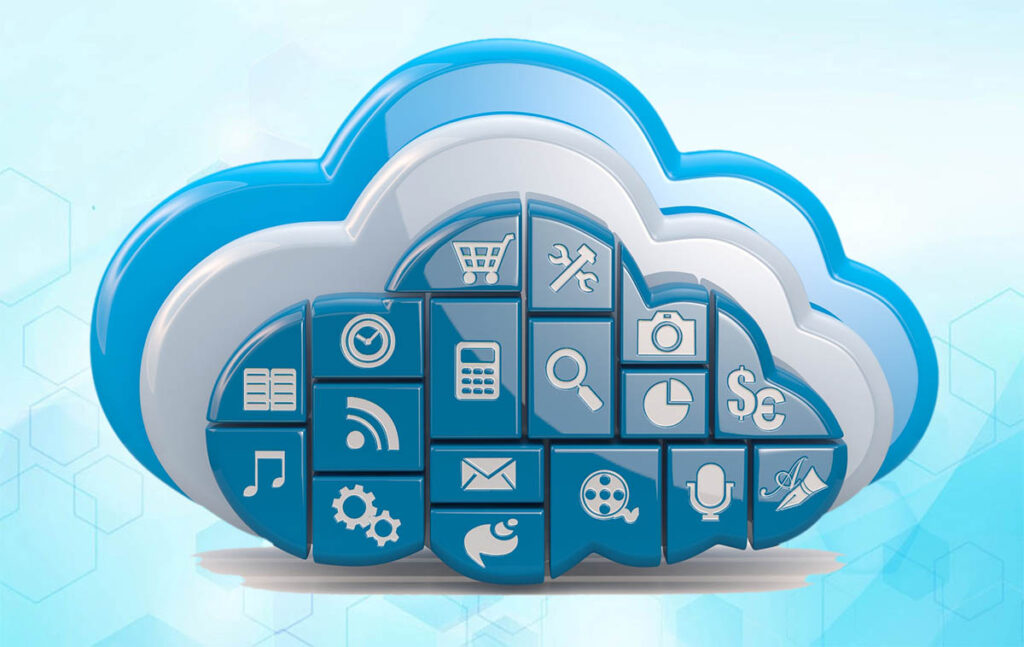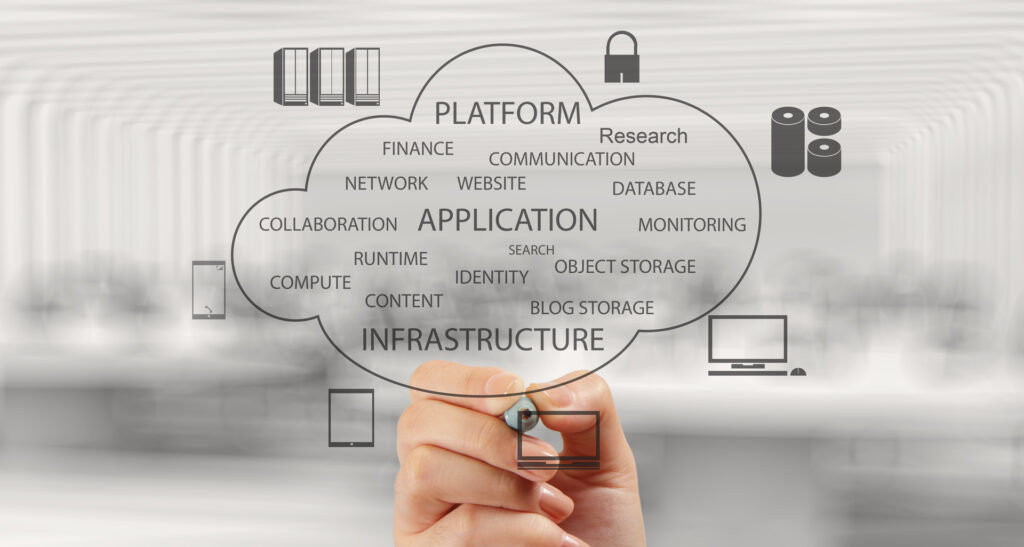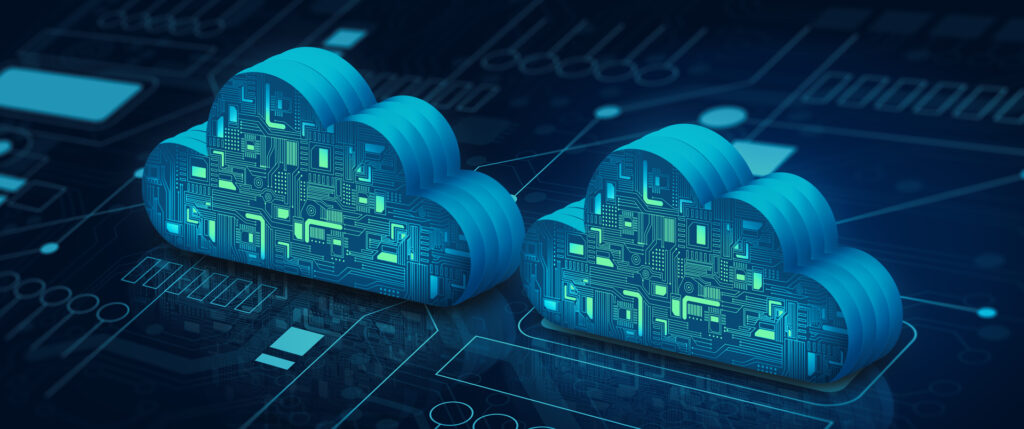Intro:
The ongoing trend of cloud computing has just got pace. The Cloud is getting popular wildly and is certainly leading the evolution of transformative tech. More so, Cloud Computing is leveraging Artificial Intelligence and the Internet of things (IoT) with full force and the paradigm shift is already happening toward hybrid work enabled by cloud.
Building on all these developments, cloud computing is helping businesse of every size and niche. These businesses are implementing hyper-productive use cases i.e. big data, backups, virtual desktops, coding platforms, and whatnot.
As we dive into the future of cloud computing, we can say its role is expanding as a catalyst for a wid range of emerging technologies. Cloud computing is sure to complement virtual and augmented reality (VR/AR), the metaverse, cloud-based gaming, and even quantum computing.
In this comprehensive blog post, we’ll dive deep into the top 5 cloud computing trends and see how they are going to transform businesses across the globe.
What is Cloud Computing?
Imagine you have a magical place where you can store and use all your digital stuff—photos, docs, software—without a powerful computer in your possession. That magical place is the cloud.
For a more technical definition:
Cloud computing allows you to access and use computer resources and services via the internet.
These resources include data storage, processing power, software applications, and more. Instead of relying on a local computer to handle these tasks, cloud computing uses a network of remote servers. Cloud service providers provide these servers.

Here are some key aspects of cloud computing
- On-Demand Access
- Pay-as-You-Go
- Resource Pooling for efficiently shared resources
- Wide network sccess
- Self-service through web interfaces or APIs
- Scalability to accommodate surging demand
- Resilient infrastructure and backup systems
Cloud computing is like renting a super-smart computer on the internet. Instead of owning your own server, you can use someone else’s. Usually they are companies like Amazon, Google, Microsoft, etc. You can make the best of any of these services if you follow the cloud best practices recommended by experts.
When you send an email or stream a movie, it’s actually happening on one of those remote computers. They do all the heavy lifting and you get to enjoy the benefits. You can access your stuff from anywhere. No need to worry about running out of storage space.
Benefits of Cloud Computing
- Get rid of most or all hardware/software and save money.
- Access your resources from anywhere using any device.
- Keep your data secure in a centralized location.
- Enjoy high availability of your applications.
- Deploy new applications quickly.
- Get instant insights into your business data.
- Ensure business continuity in the event of a disaster.
- Save money on IT costs with pay-as-you-go pricing model.
- Virtualize your computing resources to get more out of your hardware.

Difference between PAAS, IAAS, and SAAS
PaaS (Platform as a Service)
Platform as a Service (PaaS) is a cloud computing model that offers a pre-configured platform to build and deploy applications.
The platform includes tools and services for building, testing, and deploying applications. Imagine you want to build a house. With PaaS, you don’t have to worry about building it from scratch. It’s like having a pre-built platform where you simply need to customize the interior to your preferences. With PaaS, you can focus on creating innovative apps without having to go deep into the complexities of infrastructure management.
IaaS (Infrastructure as a Service)
Infrastructure as a Service (IaaS) provides you with virtual computing resources over the Internet.
It’s similar to leasing the essential infrastructure components i.e. servers, storage, networking, etc. to run apps and manage data. IaaS offers scalability, cost-efficiency, and control over the underlying infrastructure they provide.
SaaS (Software as a Service)
Now, imagine moving into a fully furnished house where everything you need is already in place. SaaS is a similar case where you get access to software hosted in the cloud. It’s like accessing services on demand.
SaaS allows you to access and use software applications on the internet without having to install the software locally.
It’s as easy as using an app on your smartphone. SaaS covers a wide range of software, from productivity tools like Microsoft 365 to customer relationship management (CRM) systems like Salesforce.
Common examples of SaaS, PaaS, & IaaS
| Platform Type | Common Examples |
| SaaS: | Salesforce Google Workspace Microsoft 365 Zoom Slack HubSpot Shopify BigCommerce Zendesk DocuSign Mailchimp |
| PaaS: | AWS Elastic Beanstalk Google App Engine Microsoft Azure App Service Heroku Red Hat OpenShift Cloud Foundry Apprenda Mendix Engine Yard CloudBees Cloudability |
| IaaS: | AWS Microsoft Azure Google Cloud Platform IBM Cloud DigitalOcean Linode Vultr Rackspace VMware Cloud Alibaba Cloud Oracle Cloud Platform |
Top 5 Cloud Computing Trends
1. Edge Computing: Bringing Computing Closer to You
Edge computing is an emerging cloud computing trend that enables moving computation and data storage closer to the devices and sensors that generate it.
While cloud computing has revolutionized how we store, process, and access data by centralizing it in remote data centers, edge computing takes a different approach—it brings the power of computing closer to where it’s needed most, right at the edge of the network.
Imagine having a smart home with various connected devices i.e. security cameras, thermostats, and sensors. In a traditional cloud computing setup, data from these devices would be sent to a remote cloud server for processing.
However, edge computing sets up mini-computing environments right within your home, office, or wherever the data is being generated. This allows for real-time data analysis and decision-making without the latency that can occur when data travels back and forth to a remote cloud server.
So, how does this connect to cloud computing?
Edge computing and cloud computing are like partners in a dance. While cloud computing serves as the central hub for storing data, edge computing extends its capabilities to the edge of the network.
It complements cloud security by handling tasks that require immediate action. For example, Edge computing helps to make split-second decisions by dautonomous vehicles. Another example can be smart factories that need to optimize their production quantities.
Edge Computing: Your Local Agile Assistant
The best part about Edge commuting is it can handle critical tasks quickly as the cloud serves as the central knowledge repository. Together, they create a powerful ecosystem that enables a wide range of applications i.e. Internet of Things (IoT) to augmented reality experiences.
Edge computing ensures that interconnected cloud-enabled devices operate efficiently, all while maintaining a connection to the broader capabilities of cloud computing.
2. Hybrid Cloud Solutions
Hybrid cloud computing is key to augmenting the future trends of cloud computing. Basically, it combines the benefits of cloud computing with the control of on-premises infrastructure. It’s like having the best of both worlds and allowing businesses to scale quickly. From the perspective of cloud security, hybrid cloud brings an extra layer of protection.
Example of Hybrid Cloud Computing
Imagine a retail business gearing up for a major holiday sale. As they won’t have on-prem resources to handle that entire temporary surge, they can utilize the public cloud to handle the immense online traffic. In the meanwhile, they can keep sensitive data securely hosted on their private servers.
Think of it as having the ability of a sports car with the stability of a reliable old vehicle. It’s literally like that.
Consider a healthcare organization now…
Healthcare organizations normally deal with vast amounts of patient data that must comply with strict regulations like HIPAA. To meet these requirements, they can use a hybrid cloud model.
Again, they can store patient records and sensitive medical info on their on-premises servers whereas they can utilize the cloud for non-sensitive operations like administrative tasks and research projects.

Hybrid Cloud Vs. Multi-Cloud: What’s the Difference?
Hybrid cloud means using both on-prem infrastructure (private cloud) and public cloud resources. This allows users to keep sensitive data on their own private cloud while also taking advantage of the speed of the public cloud.
Whereas…
In a multi-cloud environment, organizations use two or more public cloud services from different providers. This can give them access to a broader range of features and services and better redundancy and resilience.
3. Cloud Security: The Key to Tomorrow’s Computing
Security is undoubtedly the most critical pillar of cloud computing. In fact, the heart of cloud security lies in data protection. Data in the cloud is like storing your most precious belongings in a bank vault. Cloud providers have to implement stringent security measures to protect it and ensure it always stays confidential.
Consider an example that illustrates the importance of cloud security…
A finance niche organization, say a bank, needs to ensure the integrity of their customers’ financial records. They need strong encryption and access controls for that data. Only cloud security is capable enough to serve this purpose at a large scale. Even in the event of a breach, cloud-hosted data remains encrypted and inaccessible to unauthorized parties.
Identity and Access Management (IAM)
IAM is a crucial component of cloud security. It’s like having an elaborate system of locks and keys. IAM allows you to control who has access to what resources and what they can do with them.
In practice, you need to use IAM to ensure that only authorized users can access specific cloud resources. For instance, the HR department can access employee data. The finance team can access only banking records. IAM provides fine-grained control over permissions and ultimately enhances data security.
Threat Detection & Monitoring
You can’t do without advanced threat detection systems these days if you are serious about cloud security. A system like this plays a role like security cameras in every corner. They continuously monitor the system for any suspicious activities and report back threats to relevant authorities.
For instance, if an unauthorized user attempts to access a cloud server, the system immediately flags the activity and may even block the user’s access.
Distributed Denial of Service (DDoS) Protection:
DDoS attacks are like a traffic deluge trying to overwhelm a service. Cloud services include DDoS protection that acts as a shield against DDoS attacks. They have the infrastructure to absorb and mitigate DDoS attacks. Ultimately, it’s their responsibility to keep the cloud-hosted services accessible all the time.
Regular Updates and Patches
Data security is an ongoing battle. Cloud providers, like diligent caretakers, regularly update and patch their systems to address vulnerabilities. This proactive approach ensures that cloud environments remain resilient and secure.
To ensure first-rate cloud security, nearly all famous cloud services also provide:
- User Behavior Analytics (UBA)
- Security Information and Event Management (SIEM) integration
- Intrusion Detection Systems (IDS)
- Threat Intelligence Services
- Application-level security controls
- Secure Web Application Firewall (WAF)
- Security incident response support
- Network isolation and segmentation
- Backup and disaster recovery options
- End-to-end data encryption
To put it simply, when cloud providers discover vulnerability, they patch it quickly and save your business from recurring harms.
4. Virtual Cloud Desktops (VCDs)
One of the most transformative cloud computing trends is the rise of Virtual Cloud Desktops (VCDs). They are literally transforming the landscape of cloud computing.
Virtual cloud desktops, also called “Cloud Desktops” or Virtual Desktop Infrastructure (VDI), provide users with a virtualized desktop environment that runs in the cloud.
In this setup, the user’s desktop interface and applications are hosted on remote cloud servers rather than on their local device.
VCDs are simply the next frontier in cloud computing as they combine many benefits of cloud computing with the power of virtual desktops. It’s as if your computer is with you wherever you go. For example, you can directly boot your PC into a cloud environment. This is especially valuable for remote workers, allowing them to maintain productivity from home or even while traveling.

Benefits of Virtual Cloud Desktops
- Users can access their virtual desktop from various devices including including laptops, tablets, and smartphones via the Internet.
- Virtual cloud desktops are centrally managed by IT admins. They can easily deploy updates, manage security, and control access to resources.
- Data and applications are stored on cloud servers. That enhances security and data protection. Users get access to desktops through encryption and authentication mechanisms.
- CVDs can be easily scaled up or down to meet changing demands. This makes them suitable for businesses with fluctuating workloads.
- No need to spend on hardware and high-end local machines. Users can also benefit from a pay-as-you-go pricing model.
- VCDs often come with built-in backup and disaster recovery options.
- Collaboration on documents and applications in real-time.
- Users can personalize their desktop environment to suit their preferences.
Future Trends in Cloud Computing: VCDs are Leading the Decentralization
We all know that decentralized remote work is the future of technology. The COVID-19 pandemic also accelerated the adoption of remote and hybrid working models, and VCDs are definitely going to play a pivotal role in this transformation.
Examples of VCD Implementation
Consider a scenario where a team of architects collaborates on a project. With VCDs, they can access their virtual desktops from different locations and work seamlessly on complex design software as if they were all in the same room. The files and applications are securely hosted in the cloud, and data remains protected.
VCDs are also gaining traction in the education sector. Schools and universities use VCDs to provide students with virtual classrooms accessible from home. It ensures that students can access educational resources, collaborate on projects, and attend classes, all while protecting their data.
5. AI and ML-Powered Cloud: Transforming Future Trends in Cloud Computing
AI & Machine Learning are literally reshaping the future of everything let alone cloud computing. In fact, their integration with cloud technology has the potential to revolutionize the benefits of cloud computing by augmenting its capabilities immensely.
AI & ML for Cloud Security
One of the future trends in cloud computing has to be an intensified focus on data security. With AI and ML-powered cloud platforms, security measures are becoming smarter and more adaptive. Imagine a cloud security system that learns from patterns of data access and usage. It can quickly identify and respond to potential threats.
For example, a business leveraging this power can detect unusual access patterns to sensitive customer data. If it notices any abnormal activity, it can automatically trigger alerts or even take preventive actions i.e. isolating the affected resources.
This is just one example of its use case.
Optimizing Resource Allocation
Cloud computing often involves a dynamic allocation of resources to meet different workloads. AI & ML can easily consolidate this process. Consider a cloud system that analyzes historical usage data and predicts future resource demands. Its all because of AI and ML that it can do that pretty much accurately. More so, it can automatically adjust resources along the process to maintain performance quality.
Automation with AI-Powered Cloud
An e-commerce website, you know, experiences sudden surge in traffic during the holiday season. With a data-powered cloud infrastructure, it can anticipate traffic spikes pretty much accurately. As a result, they do not have to get involved so much to provision additional servers to handle the extra load. In fact, the whole system will scale down on its own during quieter periods to minimize expenses for the business owner, and the whole process is mere automation.
Isn’t it magical ?
More Cloud Computing Benefits with AI and ML Integration:
- Data-Driven Insights
- Improved Automation
- Predictive Analytics
- Real-time Decision Making
- Cost Savings
- Scalability
- Beefed-up Security
- Hyper customization
- Streamlined Operations
All in all, the integration of AI and ML into cloud computing is key shift for the future trends in cloud computing. This combo is sure to beef up data security and resource allocation and will empower data-driven decision-making at lower level.
Wrapping it Up:
As cloud computing trends continue to evolve, one thing is clear: the benefits of cloud computing is just irrefutable. However, with technological advances, concerns about data security are also on the rise. Remember, the future of the cloud is only as secure as the cloud security measures we adopt.
That said, the benefits of cloud computing will flourish under the vigilant watch of robust data security, shaping the future of technology for years to come. Also, the scalability that comes with the cloud can be particularly beneficial for businesses that experience fluctuating workloads. So, cloud computing is no longer a luxury but a necessity.
It’s time to embrace the cloud!!
WME Cloud Services
WME Cloud Services is a leading name in cloud computing. With a track record of excellence, we have established ourselves as a go-to partner for businesses looking to modernize their operations.
One of our standout features is our commitment to data security. Apart from the traditional cloud offerings, we offer professional and managed services for Microsoft Office/365 and Azure. We have experts that have all the necessary skills to enable a perfect cloud environment for your business.
We make sure your users are able to access any resources efficiently from virtually any location and on any devices. Ultimately, we help you adopt some unmatched adaptability for your business. In fact, we help you leverage remote work and international cooperation like never before.
Know More
Visit our website and see what options suit your cloud computing needs the best.








